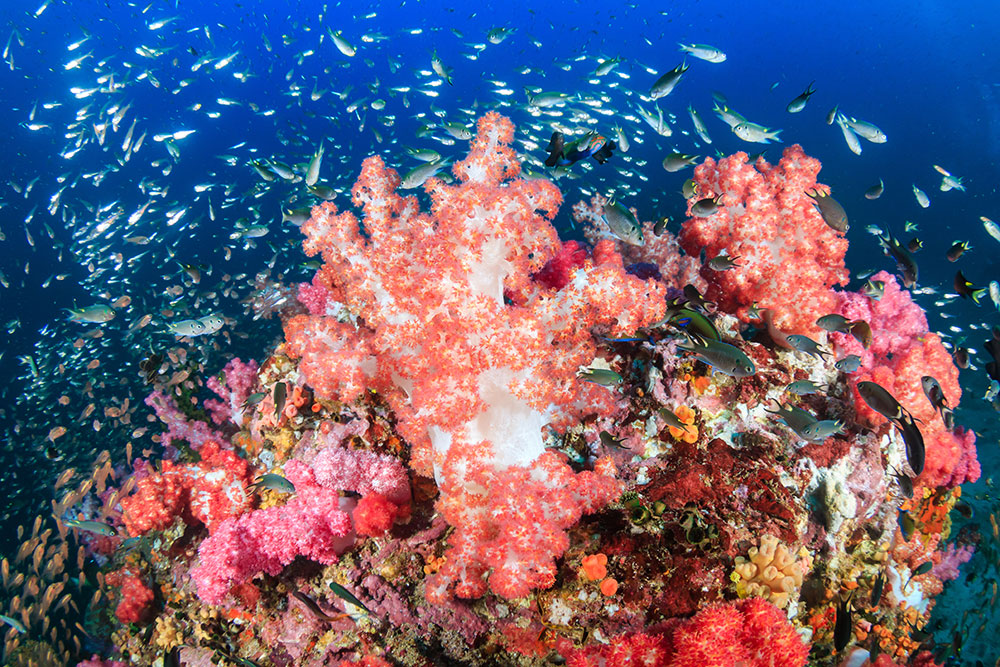A SURFACE SWIM: Beginners Guide to Coral…
Make a Donation
Get Involved

Coral reefs are vibrant marine tropical ecosystems found around the world usually in clear shallow water. An ecosystem is an environment where many plants and animals live, interact and depend on each other to survive. Coral reefs begin to form when free-swimming coral larvae attach to a rock or other submerged object off a coast line. As the corals grow, over very long periods of time, they form into a reef. Coral reefs are some of the most diverse ecosystems in the world. In addition to being some of the most beautiful and biologically diverse habitats in the world, coral reefs also are some of the oldest. They first appeared some 485 million years ago.
Fringing reefs grow near the coastline around islands and continents. Barrier reefs border along coastlines with a very wide and deep lagoon separating the reef from the land mass. Atoll reefs are ring-like shaped reefs or small islands of reefs in a circle with a lagoon in the middle and are usually located out in the open sea. Depending on their size, barrier reefs and atolls can take from 100,000 to 30,000,000 years to fully form.
The corals that build reefs are called “hard” or “reef-building” corals. Calcium carbonate is created by hard corals and provides a foundation for baby coral polyps to settle.
Soft corals have a plant-like structure, resembling bushes, trees, or stems. The density of soft coral allows fish to thrive and helps to protect coastline. Dead soft corals contribute to reef growth.

